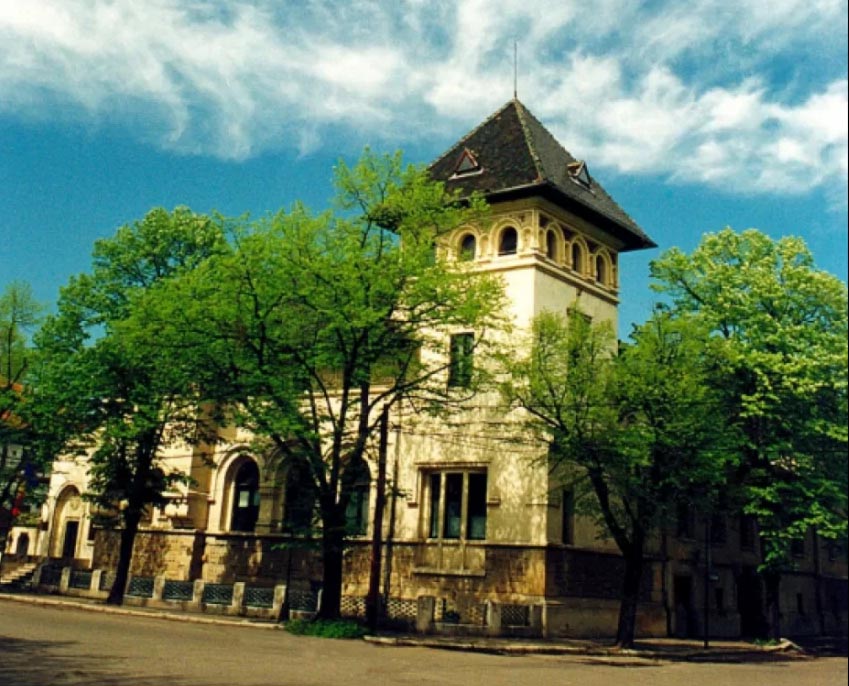Great Hall of the Romanian Cultural Institute
38 Aleea Alexandru, sector 1, Bucharest

The building in which the Romanian Cultural Institute operates today was designed by architect Petre Antonescu, a disciple of Ion Mincu and the author of numerous landmark buildings: the Triumphal Arch, the City Hall, the Kretzulescu Palace, the former Marmorosch-Blank Bank, the Faculty of Law, the Nicolae Iorga Institute of History, the Accademia di Romania in Rome. The architect dates the plans of this building between 1900-1916.
In 1926, Nicolae Malaxa received from the Bucharest City Hall the permit to extend the building of twenty rooms, started on this land, with an addition consisting of a cellar and a ground floor, according to plans drawn up by the architect Maria Irineu. In 1937 the factory owner enlarged his property with a portion of land purchased in the neighbourhood, on which he continued to extend the building, adding a new wing with a garage and nine rooms for servants, designed by the architect Richard Bordenache. The house would not, however, be used by Nicolae Malaxa as his personal residence for long.
In 1940 Nicolae Malaxa passed the building in 38 Aleea Alexandru as a contribution in kind to the share capital of the joint stock company “Carom”.
The communist regime in Romania brought the building into State ownership. In 1958 the Youth Cultural House was founded in I. V. Stalin District, the headquarters of which became the building in 38 Aleea Alexandru. In 1970, the People's Council of Bucharest decided to transfer the building from the IAL Herăstrău to the Communist Youth Union House, becoming the headquarters of the “Ateneul Tineretului” Club (“Youth Athenaeum” Club).
The current headquarters of the Romanian Cultural Institute is a neo-Romanesque-style building with a corner tower and a large roof covered with glazed tiles. On the ground floor of the building, the architect designed, at the wish of the owner, described as an “art lover”, a large hall with a glass ceiling and a stage, suitable for exhibitions, concerts and conferences. The original marble floor, still in very good condition, gives the hall a sober and elegant appearance.
In 1990 the building was given in administration to the Romanian Cultural Foundation. Following the reorganization of the Foundation, since 2003, the Romanian Cultural Institute has been working in the building in Aleea Alexandru 38. Since then, a series of repairs have been carried out to the roof and interior of the building. The Great Hall of the Romanian Cultural Institute building currently hosts movie screenings, art exhibitions, conferences, lectures, book launches and other cultural events with free access to the public.